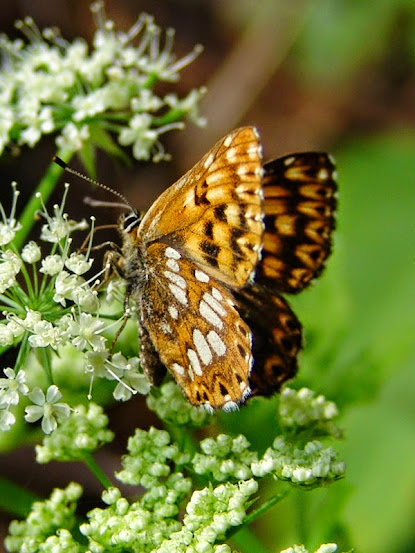D - Duke of Burgundy Fritillary
I didn't expect to have trouble so early in the Challenge, 'D' proved harder that I expected until, that is, I found the Duke of Burgundy - the Fritillary that isn't related to the other butterflies with that name.
The Duke of Burgundy, no-one knows how that name came about, is the European representative of a family of tropical butterflies. It's the only member of the genus Hamearis in the family Riodinidae.
Photo Attributions:
I didn't expect to have trouble so early in the Challenge, 'D' proved harder that I expected until, that is, I found the Duke of Burgundy - the Fritillary that isn't related to the other butterflies with that name.
The Duke of Burgundy, no-one knows how that name came about, is the European representative of a family of tropical butterflies. It's the only member of the genus Hamearis in the family Riodinidae.
 |
| Duke of Burgundy Fritillary |
It is found in Southern England but rare elsewhere with isolated colonies in the Lake District and on the North Yorkshire Moors, close to where I live.
It's a small (1" wingspan) springtime butterfly, frequenting sunny chalk and limestone grasslands, and sunny woody clearings. You may find it in woods where cowslips and primroses grow.
 |
| Cowslips on a grassy bank in North Yorkshire |
It lays it's eggs on these plant as it's slug like caterpillar only feeds on cowslips and primroses.
The male Duke of Burgundy is brown with tawny (orange) spots, the females slightly paler. The underside of its hind wings have rows of white spots.
 |
| Duke of Burgundy Fritillary - underside. |
The adults feed on flowers of the bugle, buttercups, hawthorn and wood spurge. I have to confess that I had to look up the bugle and the wood spurge as I would not recognise either of these.
 |
| Wood Spurge |
I shall have to look out for it.
 |
| Bugle |
I know where I can find some of these, but I did not know what they were called before.
The Duke of Burgundy Fritillary is one of the most rapidly declining butterflies in the UK. Fortunately conservationists are coming to its rescue as this short video shows.
Love is like a butterfly
As soft and gentle as a sigh
The multicolored moods of love are like its satin wings
Love makes your heart feel strange inside
It flutters like soft wings in flight
As soft and gentle as a sigh
The multicolored moods of love are like its satin wings
Love makes your heart feel strange inside
It flutters like soft wings in flight
Photo Attributions:
- Duke of Burgundy Fritillary (Hamearis lucina): April 2007, by Hertonicus - CC BY-SA 3.0
- Duke of Burgundy Fritillary - underside: June 16 2006, by Mnolf - CC BY-SA 3.0
- Wood spurge: 1 May 2006, geograph.org.uk, by Bob Embleton - CC BY-SA 2.0
- Bugle: 17 May 2009, geograph.org.uk, by Glynn Baker - CC BY-SA 2.0
- Video: Rescuing a rarity - National Trust.
9 comments:
I am delighted to hear that there is so much effort on conserving these fritillaries. Very pretty butterfly.
Quite a long name for a little butterfly. I do wonder where the name came from.
Beau-ti-ful butterfly series, and love those blossoms!
Hi Bob! This butterfly is quite attractive. The Bugle flower was in my Flower Fairy Alphabet post, and our very own Wendy M. said that she knows it by the name "Ajuga".
Hugs,
Kathy M.
Hi Bob - the Duke of Burgundy Fritillary butterfly is a great name .. having had to look up bezants yesterday .. I wonder if there's some heraldic aspects to its name. Bugle flowers we get on the Downs here .. but I too had forgotten its name ... also Wood Spurge ..
Lovely photos - cheers Hilary
Hi Bob .. I love the Duke of Burgundy Fritillary .. I wonder if there's not a connection between heraldic ideas and it's name. We get bugle flowers on the Downs, but I'd forgotten its name, as too the Wood Spurge ..
Cheers Hilary
I'm now wondering where I would need to go to see such a variety of butterflies. I see some occasionally in my yard, but they all seem to be 1 or 2 varieties.
What a tiny little wonder, Bob!...:)JP
Lots of great information here. Who knew there was so much to know about butterflies?
Post a Comment